Civil unrest and political instability increases due to COVID-19
Key findings from the Global Peace Index 2021.
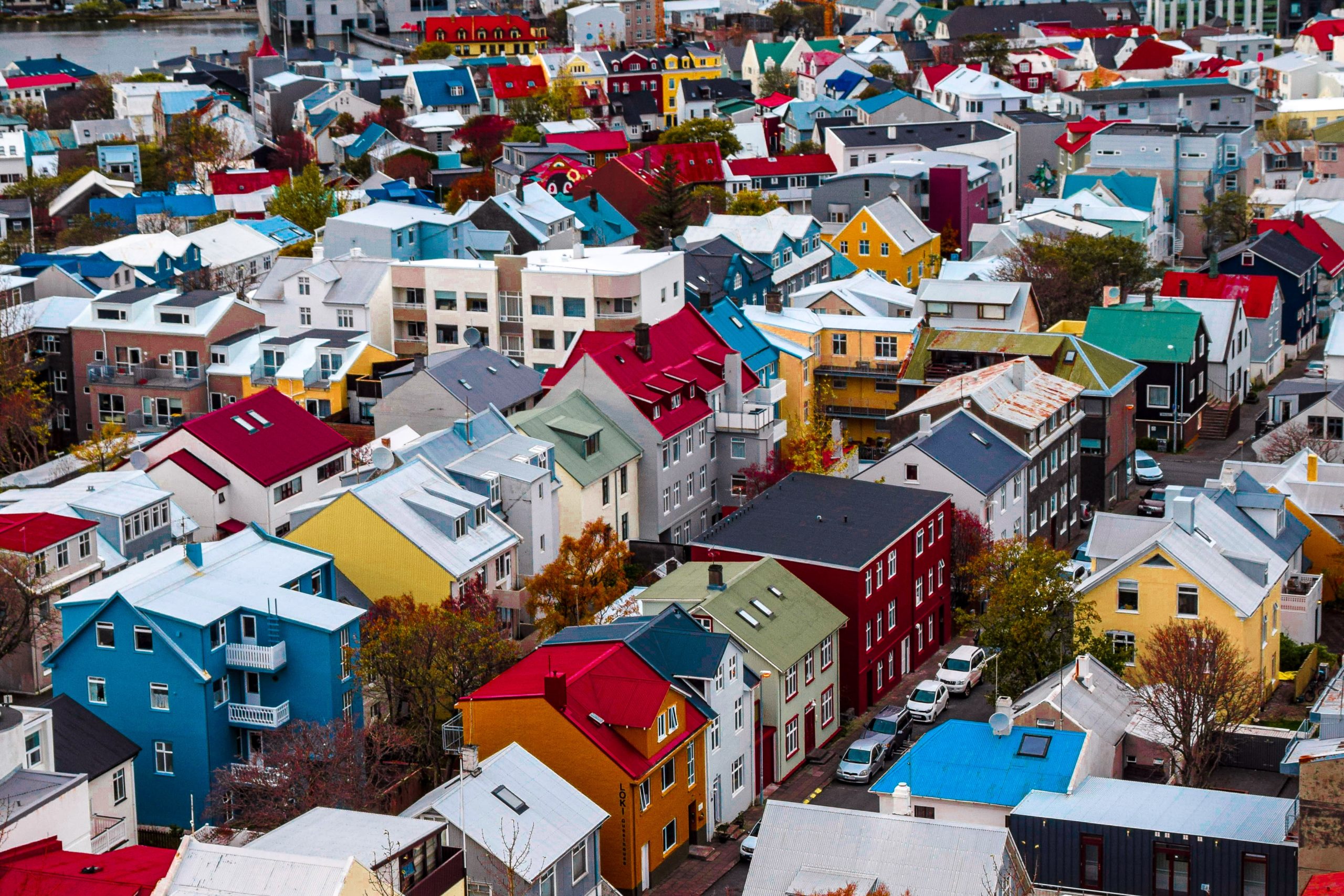
Iceland remains the most peaceful country in the world, a position it has held since 2008. It is joined at the top of the index by New Zealand, Denmark, Portugal, and Slovenia. Afghanistan remains as the least peaceful country in the world for the fourth consecutive year, followed by Yemen, Syria, South Sudan, and Iraq. Eight of the ten countries at the top of the GPI are located in Europe. This is the largest share of European countries to be ranked in the top ten list in the history of the index.
The largest improvement in peacefulness occurred in the Middle East and North Africa (MENA) region, which recorded significant reductions in conflict; however, it is still the least peaceful region in the world. Iraq recorded the second largest improvement globally after Ukraine. Burkina Faso experienced the biggest deterioration of any country in the world, falling 13 places.
The indicators that had the largest deteriorations in the 2021 GPI were: military expenditure (105 countries), weapons imports (90 countries), political instability (46 countries) and violent demonstrations (25 countries). The following indicators had the most improvements: terrorism (115 countries), internal conflicts fought (21 countries) and deaths from internal conflict (33 countries).
COVID-19 highlights
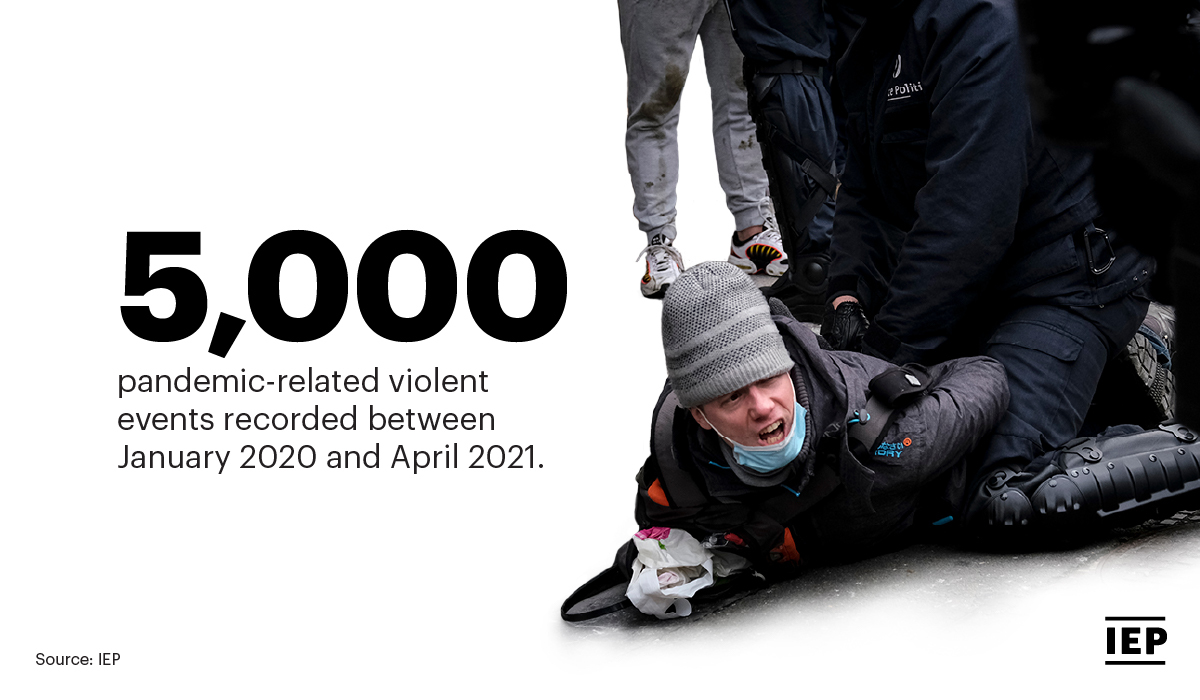
Civil unrest & COVID-19
Fuelled by the pandemic the key negative trend this year is the global rise in civil unrest.
The largest regional deterioration in peacefulness occurred in North America, due to the increased levels of political instability, homicides, and violent demonstrations. Events such as the storming of the Capitol building and widespread protests across the United States in support of the Black Lives Matter movement increased civil unrest, political instability and the intensity of internal conflict in 2020.
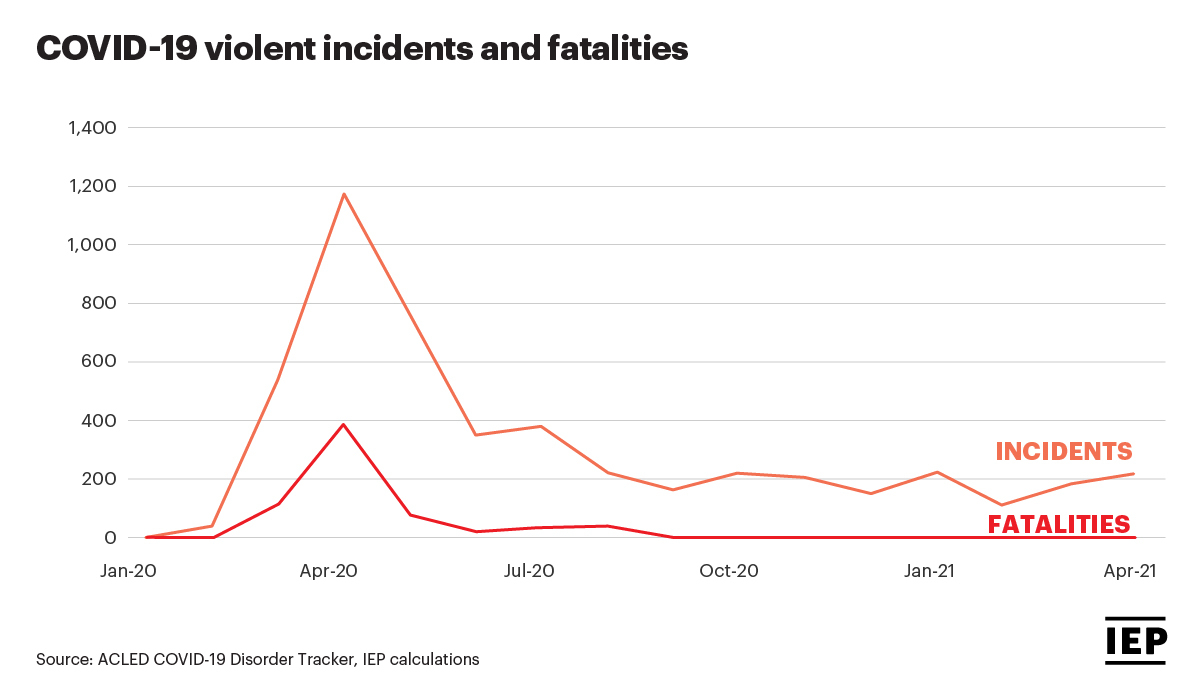
During the pandemic, countries with higher levels of peacefulness had more resilient economies. High Peace* countries recorded reductions of less than 7% in total hours worked, while low Peace countries recorded up to 23% according to IEP’s Business & Peace Report 2021.
The full post-pandemic recovery will not be quick or easy. It is also likely to be uneven, and countries with weak fiscal situations will find it harder than others. Equatorial Guinea, Sierra Leone, and Laos are amongst the countries considered to have the greatest risk of large falls in peacefulness.
Although Europe experienced a number of protest events last year, the region remains the most peaceful in the world; however, political instability rose across the continent, along with key indicators of Militarisation, including military expenditure, weapons imports, and nuclear and heavy weapons capabilities.
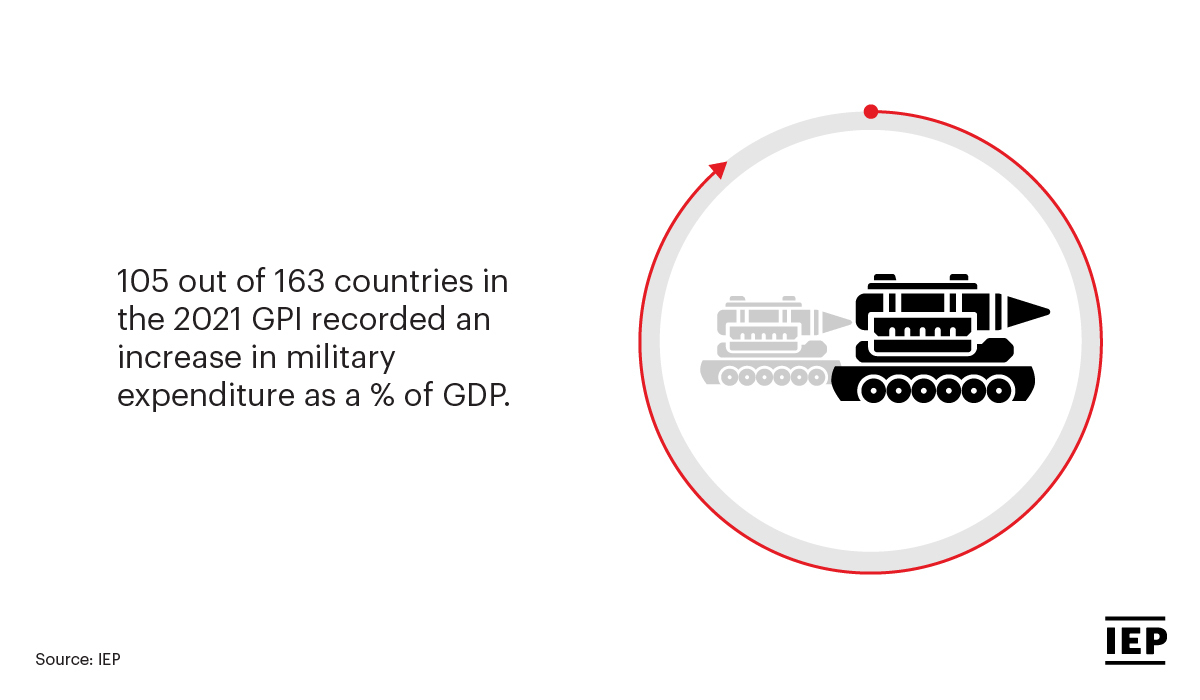
Militarisation and terrorism
Global militarisation has increased over the past two years with more countries increasing military expenditure and their armed services personnel rate. This is a reversal of the trend of the prior decade where 105 countries had improved, while 57 deteriorated. The US, China, Germany and South Korea had the largest increases in military expenditure in the last two years.
The death toll for terrorism continues to decline, with total deaths from terrorism falling for the last six consecutive years. Preliminary data for 2020 suggests that less than 10,000 deaths were caused by terrorism.
Despite the total number of conflict-related deaths falling since 2014, the number of conflicts globally increased by 88% since 2010. However, new conflicts are emerging in the Sahel and the Horn of Africa with sub-Saharan Africa accounting for over 65% of total violent conflicts in the 2021 GPI. Preliminary data suggests that this trend is likely to continue.
Overall, the economic impact of violence in 2020 rose slightly to $14.96 trillion – or 11.6% of global GDP – due to an increase in global military expenditure, which rose by 3.7%. This is equivalent to $1,942 for every person on the planet.
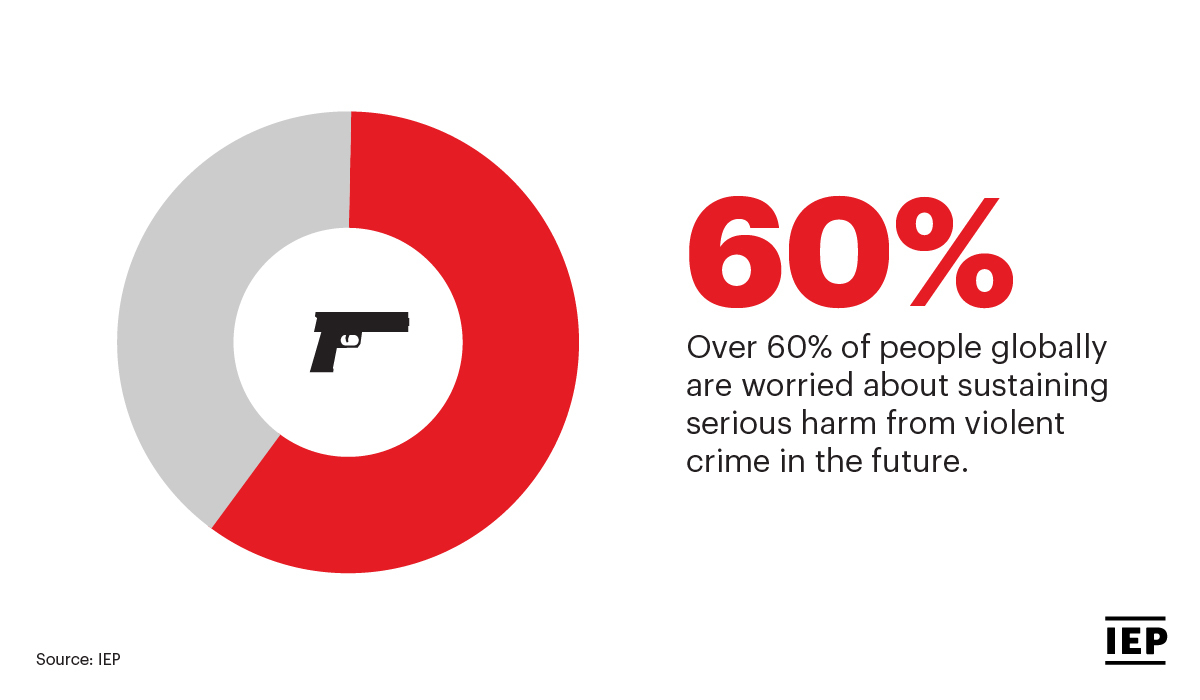
Violence and safety
Violence remains a pressing issue for many people globally and is cited as the biggest risk to daily safety in almost a third of countries. Over half of the population in Afghanistan, Brazil, South Africa, Mexico, and Dominican Republic reported violence as the greatest risk to their safety in their daily lives.
Despite this, some indicators of violence have recorded significant improvements since the start of the index, including perceptions of criminality which has improved in 86 countries. 123 countries have seen their homicide rate fall since 2008 and people from 84 countries have stated they feel safer walking alone. Even with these improvements, data has revealed that women are 5% more fearful of violence than men – while some countries have extreme differences. In Portugal 23% of women are more fearful of violence than men.
In addition, the Ongoing Conflict domain improved for the first time since 2015 and the number of deaths from conflict, both internal and external, continued to fall.
For more information, download the Global Peace Index 2021 here.